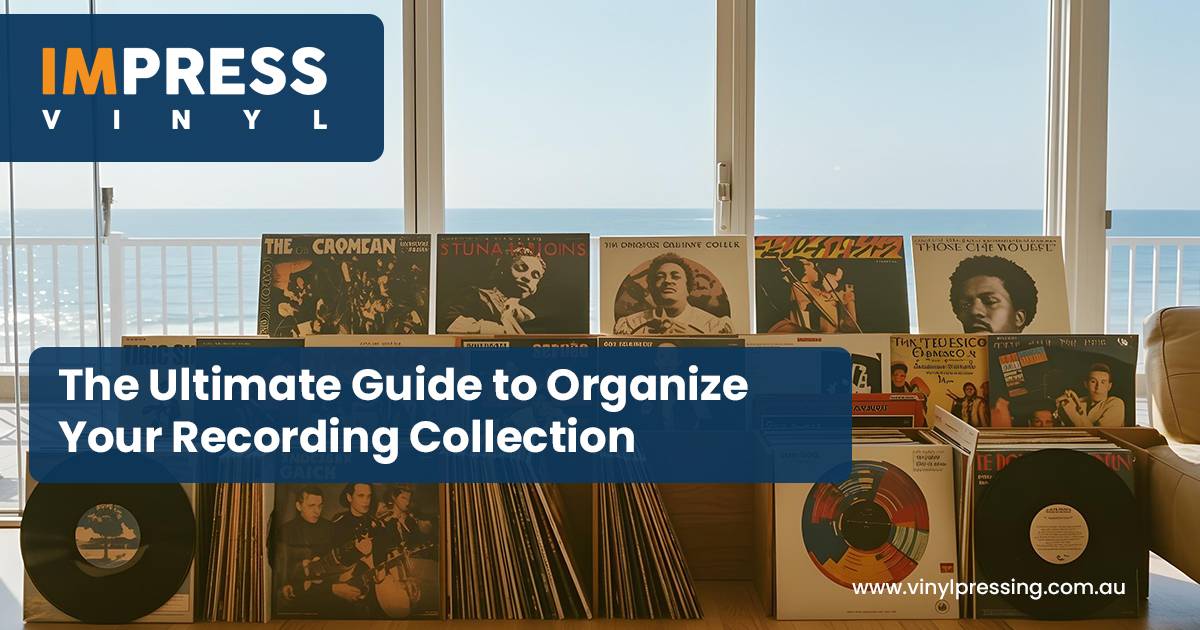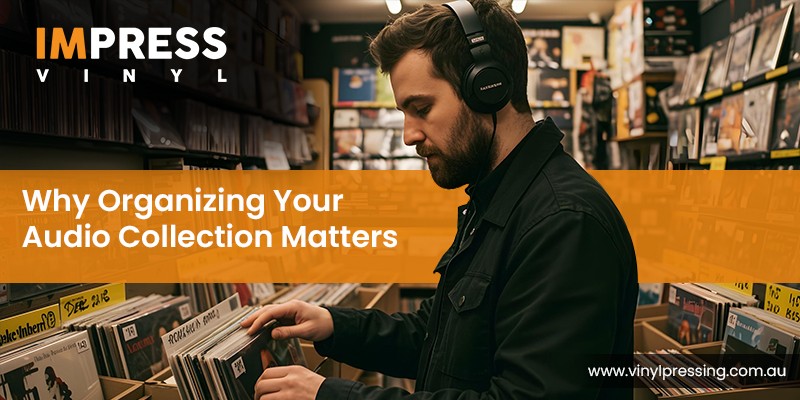The Ultimate Guide to Organize Your Recording Collection

Have you ever lost a rare recording you loved? Maybe a bootleg concert, a cherished voice note or a vintage cassette? You are not alone.
Did you know that an estimated 25% of people lose important digital files every year due to disorganization or lack of proper storage? And if you are someone who collects audio whether it is music, voice notes, interviews or personal recordings this can be even more painful.
For years, we lived in this chaos. As a music collector and amateur audio documentarian, we all had recordings spread across old iPods, forgotten Dropbox folders, vintage cassettes, CDs and even labeled-but-lost USB drives. We couldn’t find anything when we needed it and every search felt like a difficult project.
Sound familiar?
If so, this is your ultimate guide to organizing your recording collection whether it is digital, physical or a mix of both
Why Organizing Your Audio Collection Matters

Let’s begin with the “why” because unless we understand the importance of organizing our recordings, we won’t follow through.
Time-Saving:
According to a 2022 study by the International Data Corporation (IDC), people spend 20-25% of their workweek looking for files.
Mental Clarity:
A cluttered archive can increase stress and reduce creative flow.
Preservation:
Physical tapes and CDs degrade over time. Digital files can be corrupted or lost if not backed up properly.
Productivity:
Whether you are a podcaster, musician or hobbyist, a well-organized system helps you produce, share and showcase your work faster.
Steps To Organize Your Records
Step 1: Audit Your Existing Collection
Before we can organize, we need to know what we are working with. That means locating every recording you have digital or physical.
Start with:
- Physical formats (CDs, vinyl, cassettes, MiniDiscs)
- Digital files (MP3s, WAVs, FLACs)
- Cloud storage (Google Drive, iCloud, Dropbox)
- Streaming libraries (Spotify playlists you’ve built)
- Devices (phones, tablets, old computers, USBs)
When someone first did this, they discovered recordings in 11 different sources, including a forgotten phone backup on a 2013 MacBook. They created a central spreadsheet to log everything, date, format, genre, location and a short description.
Step 2: Categorize and Label Your Files
This is where the magic starts to happen. Categorizing your recordings not only makes them searchable but gives your collection structure.
You can sort by:
Type:
Music, podcast, interview, ambient, voice memo, field recordings
Format:
MP3, WAV, FLAC, AAC, CD, cassette
Purpose:
Personal, archival, professional, demo
Theme or Mood:
Relaxing, energetic, nostalgic, funny
Chronology:
Year, month or even exact recording date
Example: Let us say you recorded your band’s jam sessions in college. Those go under Music → Jam Sessions → College → 2017-2019. Label the files with names like: band_jams_vol1_2018_live.wav. You can even add tags like #live #guitarSolo #favorites.
Step 3: Digitize Old Physical Recordings
Still hanging on to old cassettes, CDs or even reel-to-reel tapes? That’s fantastic but analog formats won’t last forever. It is time to digitize and preserve them.
Tools You Can Use:
- Cassette to MP3 Converters (e.g., Reshow Cassette Player)
- USB Turntables for vinyl
- CD Rippers like Exact Audio Copy
- Audio Interfaces (Focusrite Scarlett, Zoom H4n) for recording clean transfers
Step 4: Set Up a Reliable Storage and Playback System
Once you have digitized and categorized everything, it is time to decide where and how to store it.
A good structure includes:
Local Storage
- External HDD or SSD
- Labeled folders with consistent naming conventions
Cloud Storage
- Google Drive, OneDrive, Dropbox for remote access
- Consider cloud services that allow audio streaming (e.g., Plex, Audiobox)
Think of this like building a searchable audio library not just a digital dump.
Step 5: Implement a Backup Strategy
Even if your system is perfect, a single hardware failure can destroy years of work. Don’t skip this step.
Follow the 3-2-1 Rule:
- 3 Copies of every file
- 2 Different formats (e.g., cloud + physical drive)
- 1 Stored off-site (could be cloud, another location, or a friend’s place)
Step 6: Make Files Searchable with Descriptions and Transcripts
Naming files properly is step one. Making them searchable is step two.
If you deal with spoken word (interviews, voice memos, lectures), consider using AI transcription tools like:
- Descript
- Otter.ai
- Sonix
This allows you to search actual words inside the audio.
Step 7: Create Listening Playlists and Archives
Organizing Vinyl records is not just about storage but it is also about experience.
Start building:
- Playlists by mood or theme
- Archives by year or topic
- “Best of” folders for your favorite content
This helps you rediscover gems and makes it easier to share or reference recordings in conversations, projects or creative work.
Step 8: Maintain It Like a Digital Garden
Like any system, your collection needs ongoing care.
Make it a habit to:
- Add new files with tags immediately
- Schedule a monthly 30-minute “Vinyl records organization sprint”
- Review backups once a quarter
This allows you to search actual words inside the audio.
What If You Are Already Drowning in Chaos?
You are not alone and you don’t need to do it all in one go.
Break it down:
- Week 1: Collect and audit files
- Week 2: Start digitizing physical media
- Week 3: Organize folders and apply metadata
- Week 4: Set up backup systems and playlists
Consistency beats perfection. Start small and momentum will build.
Conclusion
Your recordings tell stories of your life, your work, your passions. They are more than files or objects; they are pieces of time.
With organized record collection, you are not just decluttering but you are honoring your past, empowering your present and preserving your legacy for the future.
So next time you want to relive that summer concert, share your grandparent’s voice with your children or find that killer guitar riff from 2015… You will know exactly where to find it.
If you are dreaming of pressing your personal collection, album or demo onto vinyl, there is no better way to preserve and share your audio in a truly timeless format.
Impress vinyl is Australia’s go-to destination for custom vinyl pressing. Whether you are a musician, label, or collector we will help you turn your audio into high-quality, physical vinyl—pressed, printed and packaged with care.